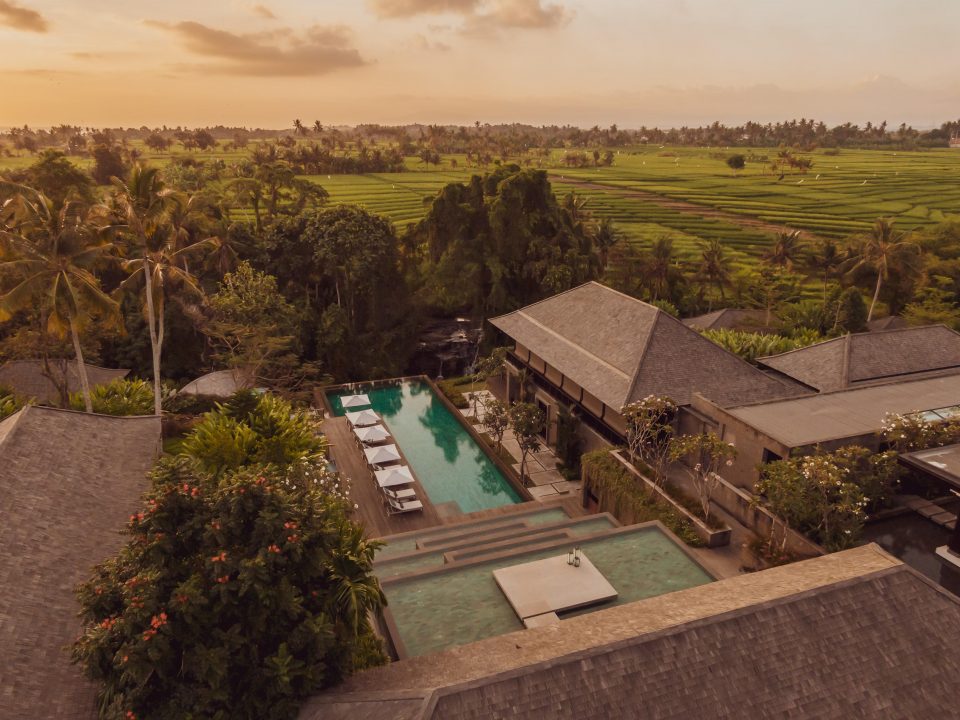Fate brought Dimitri Tran (DT) and Adrien Portier (AP) together in Bali, to embark on their first endeavour in tourism and hospitality.
The two are currently working on a couple of hospitality projects in Indonesia, namely the boutique luxury Nirjhara Resort Bali and the high-end phinisi boat VELA. Both Nirjhara and VELA revolve around three core pillars: exploration, bespoke service, and sustainable luxury. Indonesia Expat had the chance to discuss the duo’s creative approach, their backgrounds, and the threads that hold their brand together on land and sea.
Hi Dimitri and Adrien! Please introduce yourself.
DT: I grew up in a multicultural family in Paris, France before moving to the US where I went to university to study economics and international relations. I was initially attracted to finance but I somehow ended up in Bali to start Nirjhara. I didn’t have a hospitality background so I had to learn by doing (and making my fair share of mistakes along the way).
AP: Our paths are not all that different, though we did not meet until I moved to Bali. Likewise, I grew up in Paris and my background is in business and finance. I was introduced to Dimitri when Nirjhara was still at its very early pre-project stage and ended up embarking on this adventure alongside him. We essentially built the resort from the ground up and we enjoyed working together so we used our newly acquired knowledge and experience to launch VELA, a luxury sailing yacht that shares the Nirjhara ethos.
What drew you to Bali?
DT: My family acquired the plot of land where Nirjhara was erected a while back and, after a few incidents involving the people responsible for the project at inception, I ended up in charge of the development of the resort. Bali feels special to me as I had the chance to vacation on the island multiple times since 1996. While I had no previous hospitality experience prior to working on Nirjhara, I consider myself fortunate to have been able to visit Bali from an early age. This enabled me to experience the gradual evolution of the island’s tourism industry first-hand.
Along with your associate Adrien Portier, the boutique luxury known as Nirjhara was built. What sprung Nirjhara’s existence in the first place?
DT: We were moved by the views when we first stepped foot on site, and to this day we don’t get tired of enjoying the scenery, which we find reminiscent of the Balinese landscapes that we first encountered in the mid-’90s. The gentle river and stunning waterfall, juxtaposed with boundless rice fields in the backdrop present an authentic glimpse of Bali. In a sense, the hotel’s natural environment had a significant influence on its overall design and concept from the onset.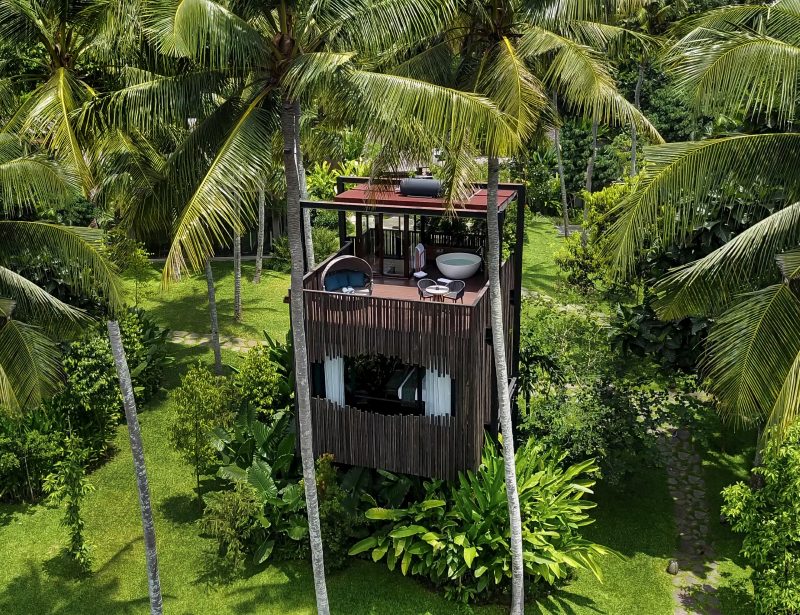
We set out to create a contemporary property that feels fresh and unique while remaining distinctively Indonesian at the same time. We opted to avoid traditional hallmarks commonly associated with Indonesian design – think wood carvings, batik and batuan art. Instead, we chose to pay tribute to Indonesia’s heritage without overlooking the constantly evolving nature of the country’s design and art scene. In our eyes, the permanent thread that holds Indonesian design together is woven around materials and craftsmanship – precisely what we wanted to focus on when designing Nirjhara and VELA.
List out a to-do list that guests should partake in when staying at Nirjhara.
AP: The resort caters to a variety of guests, but a perfect day at Nirjhara could start with a memorable breakfast taken under our pergola, overlooking the waterfall. One of our knowledgeable guides would then take our guests on a tour of Tabanan’s hidden secrets, off the beaten path. They might want to stop by Sangeh Monkey Forest, a mystical place concealed under tall mahogany trees, before checking out the ruins of the 17th century Bukit Sari Temple. After a wholesome picnic facing the stunning Nungnung waterfall, they would head back to Nirjhara for a private screening in our very own cinema – complete with popcorn and craft cocktails – before ending the day with a romantic five-course dinner in our Ibuku-designed shala.
DT: Nirjhara really combines the intimacy of a boutique retreat with the facilities of a luxury resort. Wellness enthusiasts will appreciate our state-of-the-art gym, Finnish saunas, and curated menu of Blessings – spa treatments inspired by Balinese traditions. Families love spending time by our infinity pool facing the waterfall, and the cinema is quite popular among children. Last but not least, Nirjhara is located 20 minutes away from the heart of Canggu, offering easy access to the neighbourhood’s trendy cafés, restaurants and shops.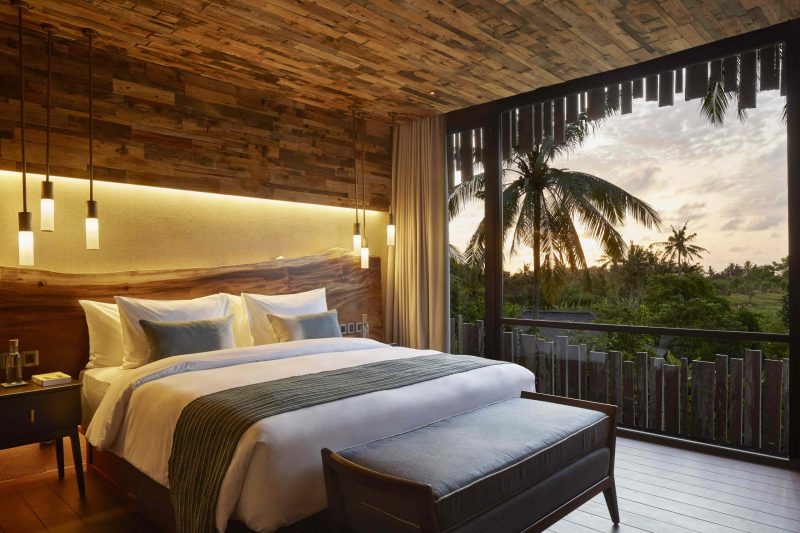
The design in Nirjhara is heavily influenced by Balinese life, landscape, art, and tradition. Was this important to instil?
AP: The natural features found around the site guided the design of the project from the get-go. As the property is surrounded by a meandering river forming part of the subak rice field irrigation system and neighbouring a local community that managed to preserve its authentic charm, we drew inspiration from traditional Balinese villages when conceptualising the layout of the resort.
All of our suites are arranged around open spaces and pavilions, reminiscent of traditional bales; places of gathering for families and local communities where most social interactions occur in Balinese society, where local people gather to share special moments together.
This can be seen in our spacious common areas and public spaces, located at the heart of the property, as we encourage our guests to come out of their villas and take part in a variety of activities offered each day, interact with our hosts, and experience a distinctive aspect of Balinese culture.
Nirjhara has the overarching theme of sustainable luxury. What reason rose to this theme?
DT: We intend to offer a unique take on sustainable luxury, one that merges contemporary luxury with forward-thinking building and operational practices, not to create an eco-lodge. We chose not to flaunt sustainability as a marketing ploy as we genuinely believe that any business should care about the environment, regardless of its industry, sector or location.
Sustainability has been one of our core values since the start of the project; concrete efforts were made throughout the entire process, from design to construction, and green initiatives are now being implemented by our team in our day-to-day operations. Nirjhara’s approach to sustainability centres on the three segments of climate, land and community. In essence, we strive to minimise our impact on climate change, tread lightly on the land surrounding the property to help reduce the strain caused by Bali’s growing tourism industry, and empower the local community of Kedungu that has supported us from the start.
With Mr Portier, you’re both currently working on the 50m phinisi sailing boat called VELA, set to launch in July. What can you share with us about VELA?
AP: With VELA, our goal was to take the Nirjhara ethos further and push the boundaries of what phinisis stand for. With its six well-appointed cabins, VELA will take up to 12 guests to the most remote corners of the Indonesian archipelago and beyond.
The project was delayed due to the pandemic but VELA is now in Serangan and construction is going fairly smoothly. We should be done with the finishing stage in late June 2021.
Is sustainable luxury also a theme for VELA?
DT: Sustainability is definitely one of our core pillars, but the approach we are taking is different than with Nirjhara. We knew that making a motor yacht sustainable would be a challenge, so we decided to focus on areas where we could actually make a difference.
We are working with an NGO to plant twice as many trees used to build Vela. We worked with an American naval engineer to optimise the sailing yacht’s hull shape to improve hydrodynamics, reduce friction, and increase fuel efficiency. We invested in serious rigging to maximise the use of our sails and reduce our dependence on fuel.
AP: Just like at Nirjhara, we banned single-use plastic in all cabins and we will provide eco-friendly amenities throughout the boat, from reef-safe sunscreen to bamboo toothbrushes (we even insisted on sourcing toothpaste in metal tubes). All of our bathroom products are sulphate-free, using all-natural ingredients to prevent contaminants from ending up in rivers, and avoid the use of palm oil, whose production is the leading cause of deforestation in Indonesia.
Where is VELA set to sail from and to?
AP: Our itineraries will be fully customisable, from visiting world-renowned highlights such as Komodo National Park and Raja Ampat, to the lesser-known Maluku Islands, diving with whale sharks in Cenderawasih, or exploring the hidden coves of Alor and Wakatobi.
We installed proper rigging so the boat will be able to sail anywhere in Southeast Asia. While we intend on focusing on Indonesia and its 17,000 islands, Thailand, Myanmar and the Philippines will not be out of reach. The idea is that we will be able to cater to a variety of requests from the most adventurous guests.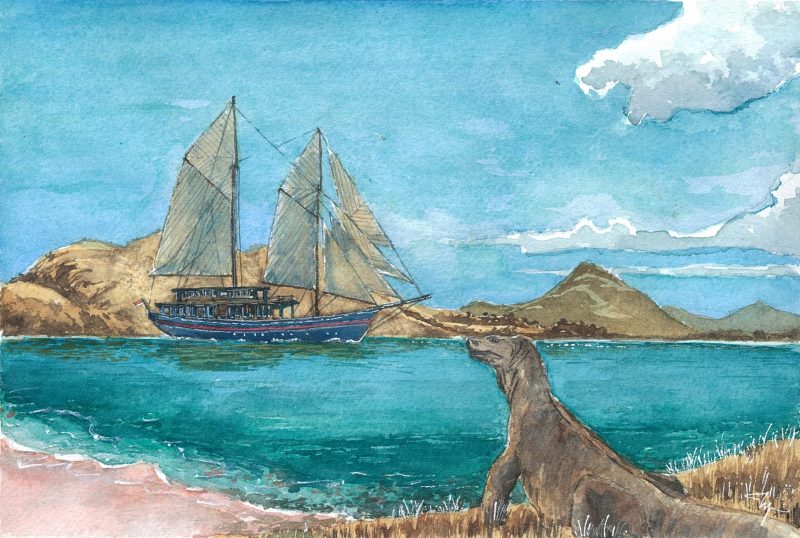
What inspired VELA’s design and facilities?
DT: VELA will feel truly Indonesian as it pays homage to the ancient boatbuilding traditions of the konjo people of South Sulawesi and it makes extensive use of ulin for the hull and teak for the house and interiors. However, just like for Nirjhara, the design will offer a modern approach to Indonesian craftsmanship.
The interiors, created by a Parisian interior designer, will be bright and airy, with a generous dash of colours. We didn’t intend to build an eco-lodge when we developed Nirjhara and, likewise, VELA will not feel rustic or quaint. We are working with local artisans at Gaya in Ubud for our ceramics and with a local workshop in East Bali for most of our decorative fabrics. Our teak furniture is custom-made locally by Warisan, though we sourced Italian and French fabrics for the upholstery.
Interestingly, this mindset can also be felt in the selection of artworks we selected for our interiors. We handpicked a few emerging Indonesian artists from various backgrounds to showcase a more contemporary view of what Indonesia is and has become. Alexander Sebastianus for his work with threads, creating contemporary art with a traditional and artisanal medium; Dini Nur Aghnia for her artful use of cornflour and clay to offer a fragmented and reconstructed view of overlooked Indonesian landscapes; and Elisa Faustina for her poetic and melancholic view of daily life growing up in Indonesia. We will also display a piece from the late Nyoman Gunarsa to honour a key transitional figure in Balinese art.
Have you ever constructed a phinisi before? How has this experience been?
AP: Just like Nirjhara was our first hospitality venture, VELA is our first attempt at building a phinisi. We took advantage of our newly acquired project management experience and surrounded ourselves with talented people with deep experience in the sector.
The idea to build a phinisi from scratch came along during a boat trip in Komodo and we subsequently chartered another phinisi to tour Raja Ampat before starting this new adventure. We had the opportunity to visit most luxury sailing yachts cruising the Indonesian archipelago and we started developing the project from a guest experience perspective. We essentially reflected on what we liked and what we believed was missing or could be improved.
DT: By then, Nirjhara was close to completion and we knew that we wanted to follow the same brand pillars of bespoke luxury, sustainability, and exploration. This helped us move forward and tie the whole experience together. Building a wooden boat is in some ways more complex than building a hotel, but by working with people who could help us build a reliable and safe phinisi, we got to focus on what will make VELA special – the guest experience. At the end of the day, our goal is quite simple: to offer our guests the trip of a lifetime and create lasting memories.
What’s next for both Nirjhara and VELA?
DT: We took advantage of the low occupancy caused by the pandemic to focus on training, putting the right people in the right positions, and improving our standards of service. In other words, we viewed 2020 as an extended soft opening phase and worked with our team to put Nirjhara in a good position so we can hit the ground running coming out of the pandemic.
In the meantime, we continued finishing a few rooms that were not fully ready yet, including our Residence, a two-story villa with a beautiful infinity pool and striking views of the river, which we plan to launch in August. We also secured another hectare of land adjacent to our property and have drawn up plans to add 18 more villas and a speciality food and beverage venue to the resort. Finally, we are working on another food and beverage outlet located right on Kedungu beach, two minutes away from Nirjhara, to offer beach access to our guests and cater to the growing number of visitors who discover Kedungu beach.
How’s living as an expat in Bali been?
AP: There have been ups and downs but overall the experience is quite positive! We both grew up in Paris so we do miss big cities. This has been particularly frustrating during the pandemic as travel restrictions have made travelling near-impossible and, even if we could travel, wandering around a city in these current times has lost some of its appeals. Life is sweet in Bali and it’ll make for great memories. Besides, there is no better place to be stranded during a global pandemic than by the ocean!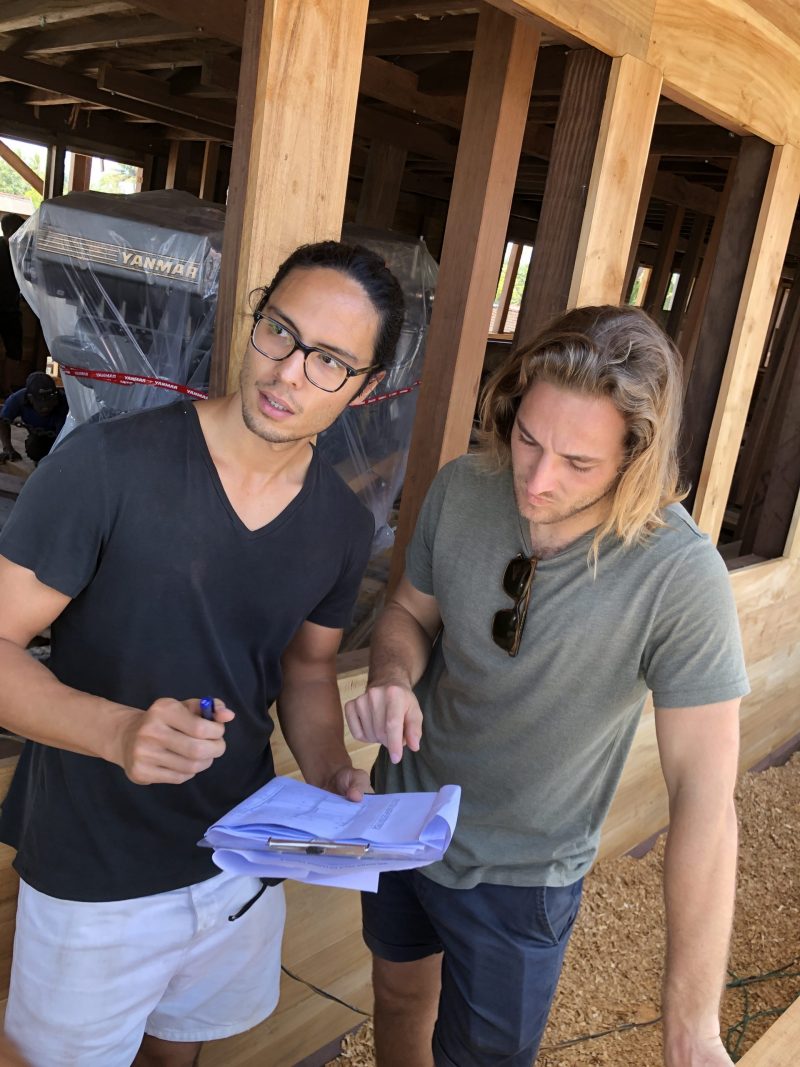
Mention a fun fact about yourself.
DP: After spending all these years in Indonesia, I ended up developing a certain fondness for dangdut music. It definitively helps bond with the local crowd and can prove handy in a variety of situations – in karaoke rooms, in the back of a taxi or on a construction site.
Where can readers get in touch with you, Nirjhara and VELA?
DP: We get to live and work on the property at Nirjhara as we are still finishing up a few things here and there, so we’re around every day, amidst our regular site visits onboard VELA in Serangan. So, I guess the easiest would be to come to grab a meal or coffee at Nirjhara!
Thank you, Dimitri and Adrien, for your time! Stay healthy and safe.
- Nirjhara Resort Bali
Address: Jl. Nirjhara, Banjar Kedungu, Belalang, Kediri, Tabanan Regency, Bali.
Tel: (0361) 2095333
Instagram: @nirjharabali




